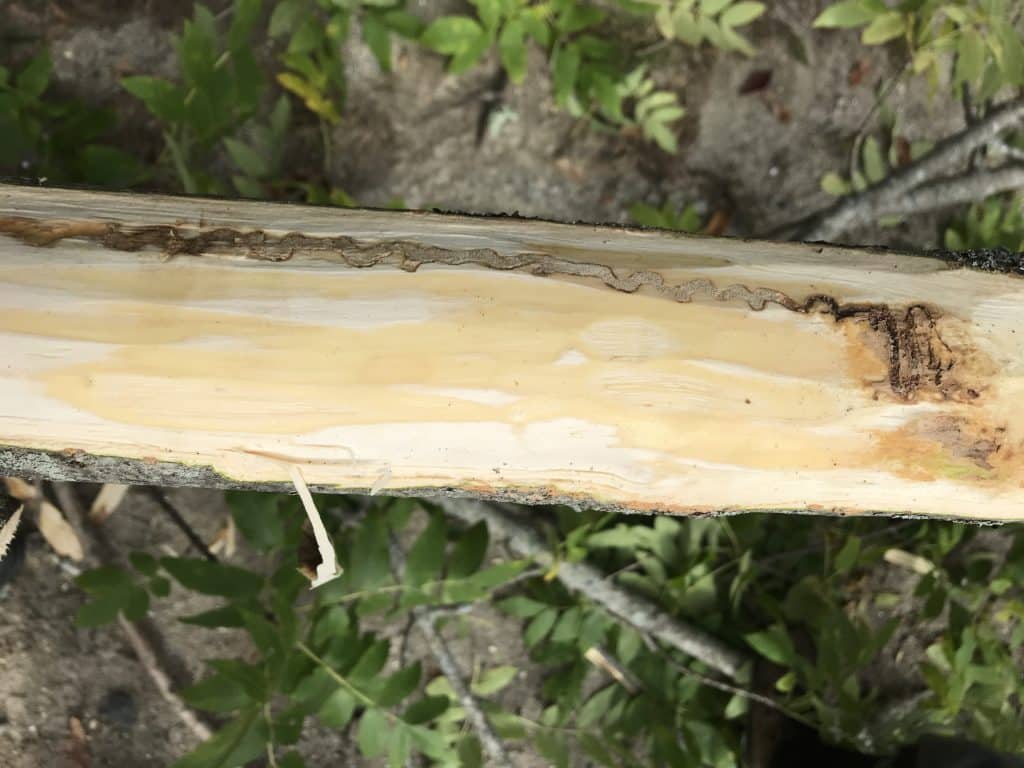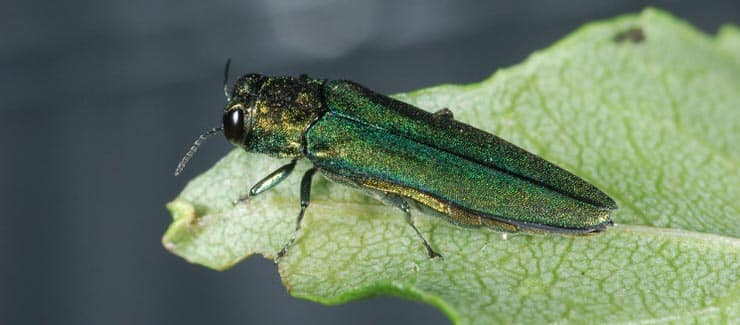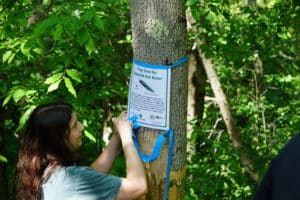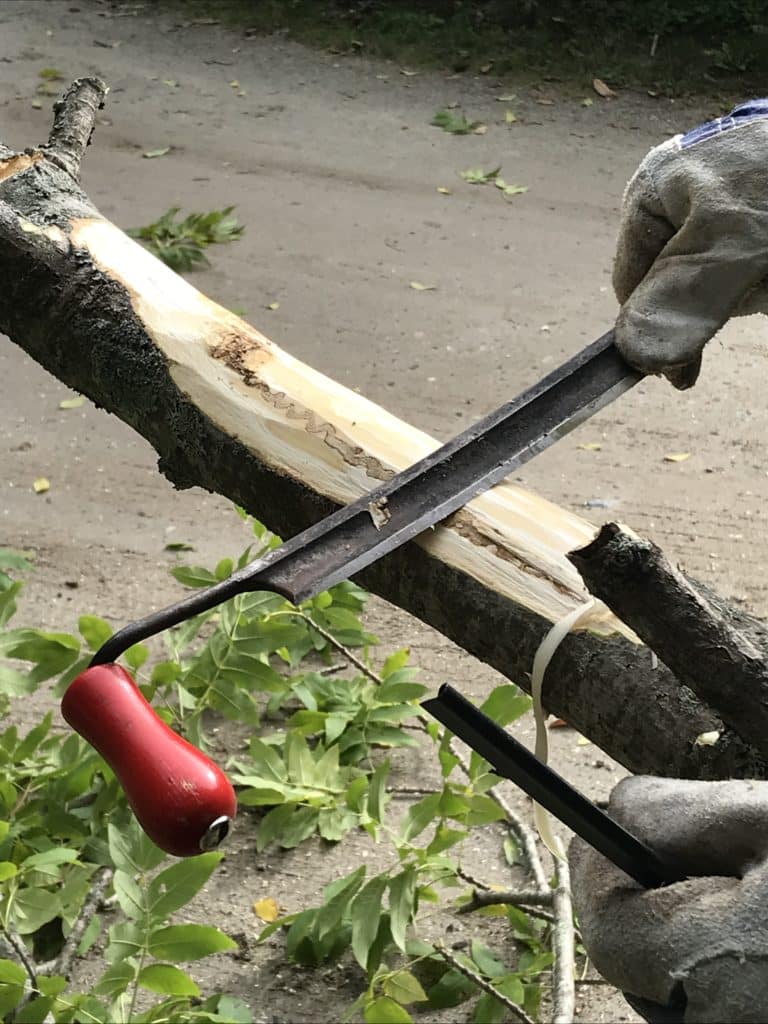
All the basic information about the Emerald Ash Borer (Agrilus planipennis) is right there in its name: “emerald” refers to the hue of its iridescent body; “ash” for the family of trees that these jewel beetles feed and lay their eggs on; and “borer” for the tunnels young beetles dig through the bark, eventually leading to the death of the host tree.
These tiny beetles exist in low densities in their native Asia, where they are kept in check by parasitic wasps and other predators. Ash forests outside of their native range aren’t equipped with such defenses, however, and the Emerald Ash Borer has become a major threat in areas where it has been introduced or spread, including Europe, five Canadian provinces, and 35 American states, including, now, Maine.
Since its discovery near Detroit in 2002, where it may have arrived after stowing away in shipping crates, the Emerald Ash Borer has killed tens of millions of ash trees and threatens the rest of the 8.7 billion ash trees in North America. In Maine, independent infestations of the beetles were first found in northern Aroostook County and in York County in 2018, and in Cumberland County in 2019.
Mainers fear its continued spread. Maine is home to three species of Fraxinus ash trees—Green Ash, Black Ash, and White Ash—and the genus is of particular cultural importance to Maine native peoples, whose relationship with the trees support intricate basketry, among other arts.

In March 2021, planning began to use Maine Audubon’s Gilsland Farm Center in Falmouth to help track potential movements of the Emerald Ash Borer, which had yet to be found north of Portland. The team—Maine Audubon educator Catherine Griset; Brooke Teller, the STEM Coordinator for Portland Public Schools, an important partner of Maine Audubon’s education team who is designing a curriculum on Emerald Ash Borer; and Colleen Teerling, a Forest Entomologist with the Maine Department of Agriculture, Conservation, and Forestry—decided to try to determine whether the invasive beetles had reached Gilsland Farm.
 Following protocol laid out by the Maine Forest Service, the plan was to turn an individual White Ash into a trap tree by “girdling” it: removing an 8- to 10-inch ring of bark around the trunk. Girdling doesn’t kill a tree but stresses it so that it releases certain chemicals into the air which Emerald Ash Borers can sense. The idea is that if there are beetles in the area they’ll be attracted to and lay their eggs on the bait tree, thereby indicating to the researchers the presence of the insects in the area and also, in theory, protecting other ash trees nearby. The team girdled a healthy tree in May (watch NewsCenter Maine’s Don Carrigan’s report about the event here), and waited.
Following protocol laid out by the Maine Forest Service, the plan was to turn an individual White Ash into a trap tree by “girdling” it: removing an 8- to 10-inch ring of bark around the trunk. Girdling doesn’t kill a tree but stresses it so that it releases certain chemicals into the air which Emerald Ash Borers can sense. The idea is that if there are beetles in the area they’ll be attracted to and lay their eggs on the bait tree, thereby indicating to the researchers the presence of the insects in the area and also, in theory, protecting other ash trees nearby. The team girdled a healthy tree in May (watch NewsCenter Maine’s Don Carrigan’s report about the event here), and waited.
The crew assembled again in early October to fell the trap tree and examine it for signs of Emerald Ash Borer. Almost as soon as the tree came down, sawyer Wayne Searles spied an unusual-looking section of bark and suspected that it might be hiding a tunnel made by beetle larvae underneath. They pulled back the bark and immediately saw the zig-zagged trail left by a young Emerald Ash Borer as it chewed its way through the wood, and, at the tip of the tunnel, the living beetle larvae itself. It was confirmed: Emerald Ash Borer had made it north to Falmouth.
But that wasn’t even the most startling discovery. An examination of the beetle larvae determined that it was not freshly hatched but was two years old, meaning it was laid as an egg on the Gilsland tree before the experiment began! Not only were Emerald Ash Borers confirmed at Gilsland Farm, they’d been there longer than anyone suspected.

So what happens now? It’s not so clear. Maine’s native ash trees have little defense against the Emerald Ash Borer, and foresters and entomologists around the country are fighting an uphill battle to control the spread.
A glimmer of hope has been found in biological control, which involves introducing some of the parasitic wasps that prey on Emerald Ash Borers in their native Asia. So far at least 30 states have introduced parasitic wasps in an attempt to control the beetles, and at least 20 states have seen the wasps take hold. State entomologists are testing the release of the non-stinging wasps here in Maine, and are contemplating what other measures to take. But two things are for sure: Emerald Ash Borers are continuing their spread throughout the state, and those of us who care deeply for ash trees and healthy forests will continue the fight.
